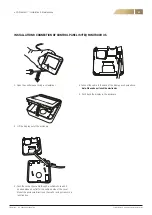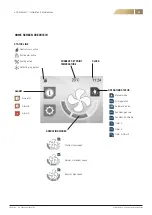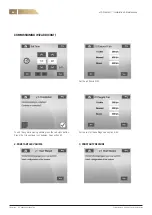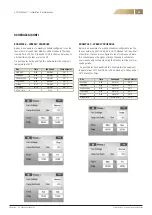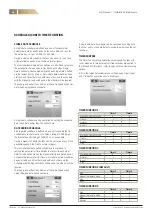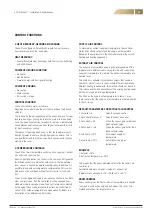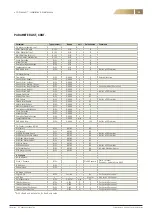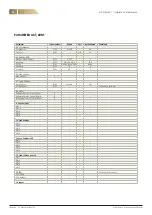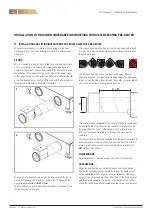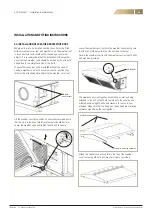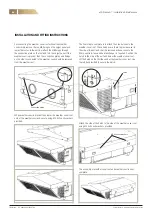
eCO Premium™ - Installation & Maintenance
27
FläktGroup DC_9604GB_20190327_R6
Specifications are subject to alteration without notice
1. HEAT RECOVERY, HEATING AND COOLING
The unit is configured differently with regard to heat recovery,
heat recovery and cooling, see below.
HEAT RECOVERY
• Counterflow Plate Heat Exchanger with Thermo Ice
®
defrosting
and 100% bypass
CHOICE OF HEATING FUNCTION
• No heater
• Electric heater
• A water heater with frost-guard function
CHOICE OF COOLING
• No cooling
• Water-cooling
• DX cooling, 1-stage
CONTROL FUNCTION
The control function works as follows:
Regardless of control mode the unit tries to achieve the desired
setpoint.
This is done by the unit depending on the needs, demand for heat
recovery, heating or cooling. Built into the system is also a dead
zone. The dead zone function (usually 2°C) acts as a temperature
zone between heat recovery and cooling unit where neither calls
for heat recovery or cooling.
The reason for having a dead zone, is that the temperature will
be slightly lower in winter, and slightly higher in summer. This is
energy-efficient and in practice even more convenient for people
staying in the room.
2. TEMPERATURE CONTROLS
The unit has three temperature control options, supply air, extract
air control and room control.
Room control and extract air control is the same control type with
the difference that in combination with room control an external
room sensor is needed (separate ordering code). In addition it is
possible to use outdoor temperature compensation. This control
mode cannot be combined with extract air control or room con-
trol.
The unit is configured for supply air control as standard. To obtain
other control modes, first the controller must be changed from
standard mode to cascade mode. Then control mode is selected
by changing the cascade reference to extract air control/room
control (0) or outdoor temperature compensation (1). Below is a
description of the different control modes.
SUPPLY AIR CONTROL
To maintain a constant supply air temperature, the controller
works from a fixed setpoint and the supply air temperature.
Based on these parameters, the controller controls the current
heating and cooling sequences.
EXTRACT AIR CONTROL
The extract air temperature gives a good average value of the
temperature in different rooms. Using this the unit controls the
supply air temperature to maintain the extract temperature at a
desired level.
This method is suitable for ventilation systems that supply a
number of similar rooms. In cases where different rooms have
different heating requirements, this method should not be used.
This is because the unit cannot detect the varying heating needs,
but can only read an average temperature.
The limits on the supply air temperature (min. temp. / max.
temp.) ensure that the supply air temperature is maintained with-
in the set range.
DEFAULT PARAMETERS FOR EXTRACT AIR CONTROL
1. Controller = 2
Selects cascade control
2. Cascade reference = 0
Selects extract air control
3. Cascade A = 0.5
When the sensor gets colder than
given setpoint value
4. Cascade B = –0.5
When the sensor gets hotter than
given setpoint value
5. Min. temp. = 15°C
Sets lowest supply air
temperature
6. Max. temp. = 25°C
Sets highest supply air
temperature
EXAMPLE
1. Setpoint = 18°C
2. Extract air temperature = 16°C
This means that the new calculated setpoint for the supply air
controller is:
Calculated setpoint = se (setpoint – exhaust air
temperature) x cascade A = 18 + (18-16) x 0.5 = 19 ° C.
ROOM CONTROL
Room control gives the best control of temperature in a specific
room and is used when only one unit serves this room. This
method works best for larger premises.
CONTROL FUNCTIONS
Содержание eCO Premium
Страница 1: ...INSTALLATION AND MAINTENANCE MANUAL eCO PREMIUM...
Страница 47: ......

